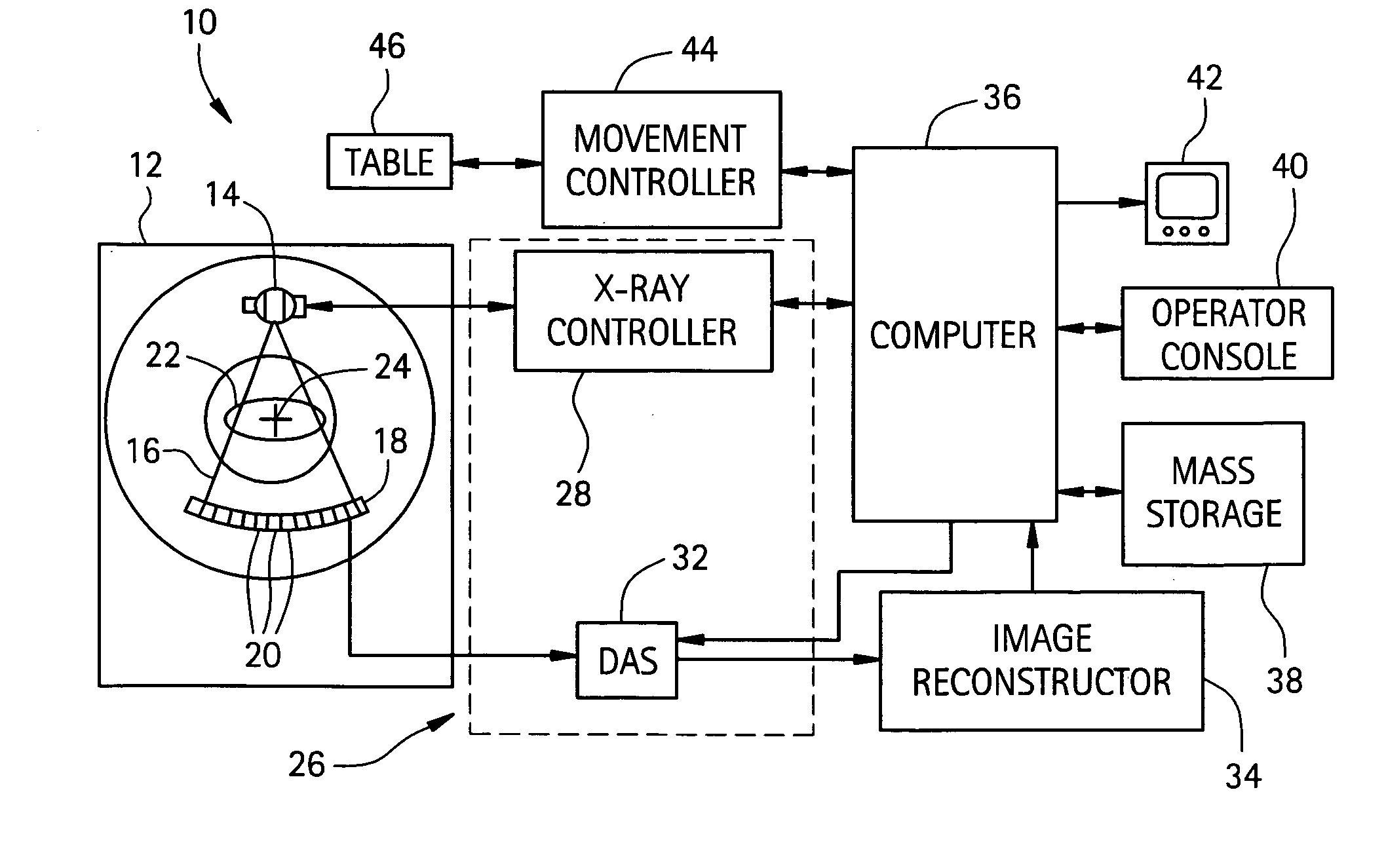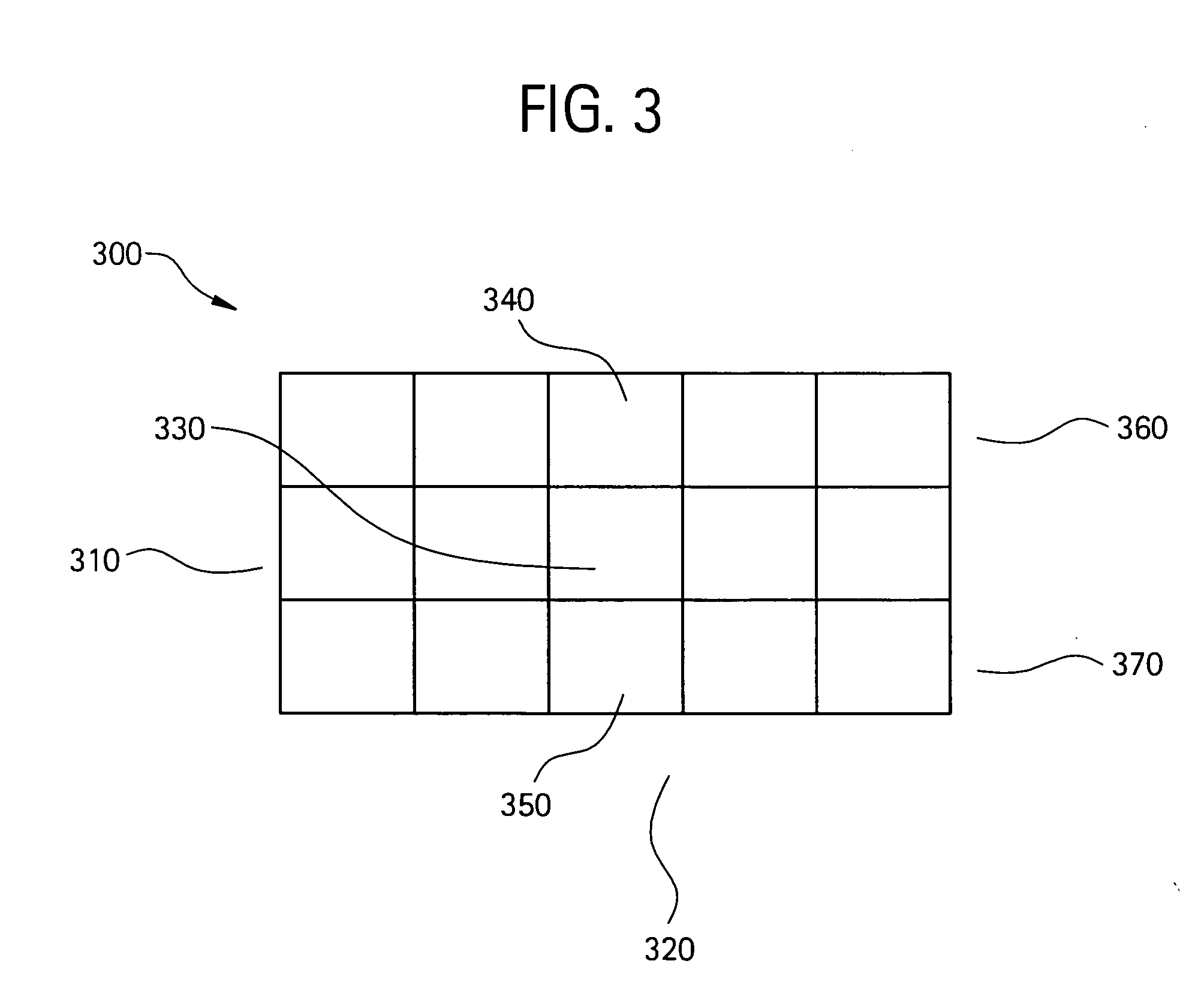System and method for defective detector cell and DAS channel correction
a detector cell and defect technology, applied in the field of imaging systems and image accuracy, can solve the problems of increasing the probability of failure in the detector cell, das channel, or das application-specific integrated circuit (asic) failure, and the detection of internal defects in objects, so as to minimize the impact and minimize the number of artifacts.
- Summary
- Abstract
- Description
- Claims
- Application Information
AI Technical Summary
Benefits of technology
Problems solved by technology
Method used
Image
Examples
Embodiment Construction
Certain embodiments of the present invention provide a system and method for correcting errors in detector cells, DAS channels, and / or DAS ASICs. Certain embodiments examine or “ride through” single cells and / or ASICs with a correction scheme. A DAS ASIC may be mapped to detector cells or channels to optimize opportunities for correction. Malfunctioning channels and / or ASICs may then be identified and correction applied.
For the purpose of illustration only, the following detailed description references a certain embodiment of a computed tomography (CT) imaging system. It is understood that the present invention may be used with other imaging systems (such as planar x-rays, ultrasound, magnetic resonance (MR), positron emission tomography (PET), single photon emission computed tomography (SPECT), micro computed tomography, and electron beam computed tomography (EBCT), and other imaging systems).
FIG. 1 illustrates a CT imaging system 100 in accordance with an embodiment of the pre...
PUM
 Login to View More
Login to View More Abstract
Description
Claims
Application Information
 Login to View More
Login to View More - R&D
- Intellectual Property
- Life Sciences
- Materials
- Tech Scout
- Unparalleled Data Quality
- Higher Quality Content
- 60% Fewer Hallucinations
Browse by: Latest US Patents, China's latest patents, Technical Efficacy Thesaurus, Application Domain, Technology Topic, Popular Technical Reports.
© 2025 PatSnap. All rights reserved.Legal|Privacy policy|Modern Slavery Act Transparency Statement|Sitemap|About US| Contact US: help@patsnap.com



